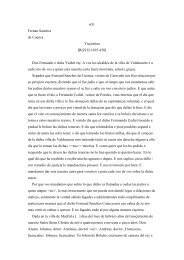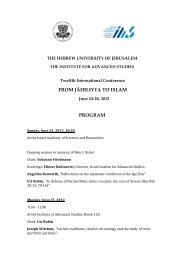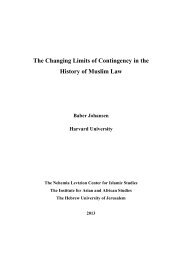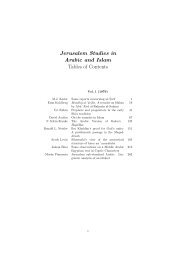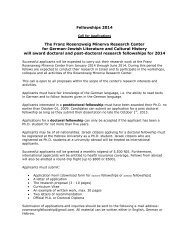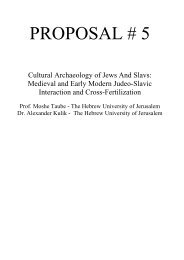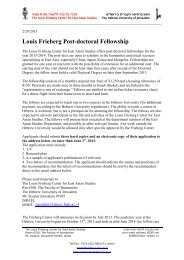Proverbs 7 in MT and LXX: Form and Content
Proverbs 7 in MT and LXX: Form and Content
Proverbs 7 in MT and LXX: Form and Content
Create successful ePaper yourself
Turn your PDF publications into a flip-book with our unique Google optimized e-Paper software.
<strong>Proverbs</strong> 7 <strong>MT</strong> <strong>and</strong> <strong>LXX</strong> 151<br />
Verse 10<br />
# 6 *8<br />
.1 '% ( *"=$# <br />
The <strong>MT</strong>, that last mentioned the woman <strong>in</strong> v. 5, beg<strong>in</strong>s here with<br />
“And<br />
lo...,” creat<strong>in</strong>g the effect of the sudden appearance of a woman (10a) whose<br />
provocative nature is described <strong>in</strong> the second part of the verse (10b). 48 The<br />
Greek, that has not stopped talk<strong>in</strong>g about the woman, looses the dramatic<br />
entrance. <strong>MT</strong> v. 10, then, beg<strong>in</strong>s a new section (And behold, a woman...),<br />
while the <strong>LXX</strong> cont<strong>in</strong>ues the former verses: ,,, “<strong>and</strong> the woman...,”<br />
referr<strong>in</strong>g to the same woman who has been the subject s<strong>in</strong>ce v. 5. 49<br />
Three elements create the changeover to a more narrative style <strong>in</strong> the <strong>LXX</strong>:<br />
(1) The translator <strong>in</strong>troduces a verb <strong>in</strong>stead of — <br />
“came upon him.” (2) The short nom<strong>in</strong>al phrase “outfit of a<br />
whore,” 50 is replaced with the more general <strong>and</strong> more prose-like .<br />
1 “hav<strong>in</strong>g the appearance of a harlot.” (3) The second<br />
concise nom<strong>in</strong>al phrase 51 is exp<strong>and</strong>ed <strong>and</strong> paraphrased <strong>in</strong>to a full<br />
relative clause: ' % ( . The translator probably<br />
read the verb as a causative (e.g., ++), hence the use of . He seems to<br />
48 One may note, <strong>in</strong> pass<strong>in</strong>g, that the surprise is expressed from the po<strong>in</strong>t of view<br />
of the wisdom-teacher witness<strong>in</strong>g the encounter: he sees the woman burst<strong>in</strong>g onto<br />
the scene. As for the lad himself, it is not clear whether he too is surprised at her<br />
appearance or was rather hop<strong>in</strong>g to meet her.<br />
49 Baumgartner, Étude critique. Toy, <strong>Proverbs</strong>, 150, prefers the def<strong>in</strong>ite form <strong>and</strong><br />
argues that the he fell out from the Hebrew through haplography ( ). This is<br />
a severe misunderst<strong>and</strong><strong>in</strong>g of the relationship between the texts. The <strong>in</strong>def<strong>in</strong>ite form<br />
belongs <strong>in</strong> the <strong>MT</strong> <strong>and</strong> the def<strong>in</strong>ite form goes with the scene as perceived by the<br />
Greek translator. They cannot be exchanged.<br />
50 See Ps 73:6 &( ? “lawlessness enwraps them as a mantle.”<br />
51 HALOT: “with a cunn<strong>in</strong>g heart”; NJPS: “with set purpose”; RSV: “wily of heart.”<br />
The phrase occurs only here (<strong>in</strong> 4:23 functions differently: protect one’s heart).<br />
It should probably be expla<strong>in</strong>ed from ‘guard, hide’ (cf. Ezek 6:12; Isa 48:6), that<br />
would refer to the manipulative nature of the woman who keeps her seductive<br />
<strong>in</strong>tentions hidden or guarded <strong>in</strong> her heart.





